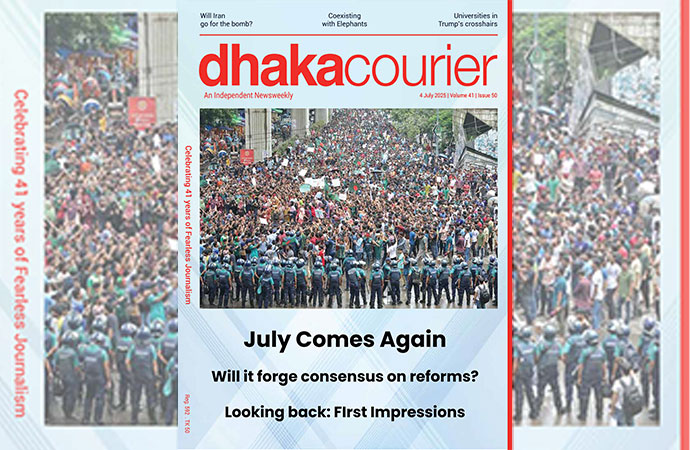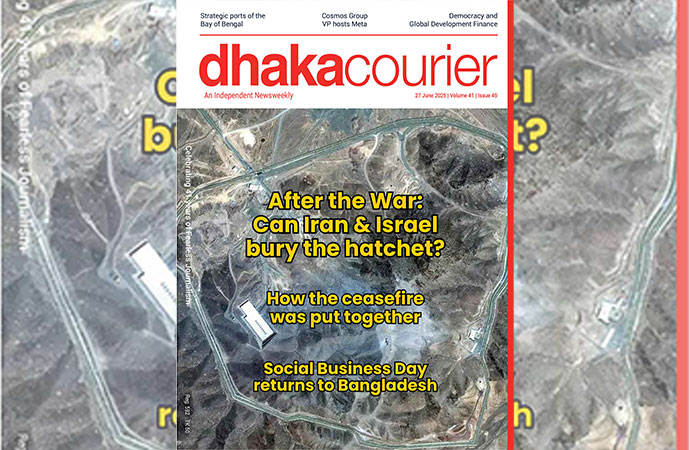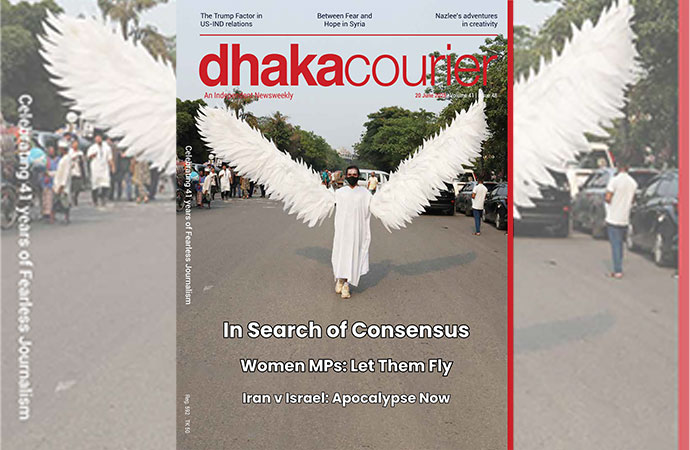Column

The old cannon which once was a landmark in front of Gulistan cinema house (not in the picture) facing the Rajuk building
Dhaka is difficult terrain for many of us. Over the last three decades and more it has mutated into an unhappy manifestation of its former self. A beautiful town that once cradled nature in its warmth has dwindled into being a sprawling urban slum where insensitivities have the upper hand, where the soul has been silenced by ersatz modernity.
And yet for those among us who have been part of Dhaka, have seen the way it has aged, there are yet the spots we love trekking through, for the beauty they yet hold, for the memories which come associated with them. Wari is no more the tranquil, aristocratic residential area it used to be. Homes have vanished in the onslaught of high-rise apartment complexes. Supermarkets have sprouted where homes used to be. Despite it all, we love walking down Rankin Street, to remind ourselves of the glamour once associated with Dr. Nandi's residence. Baldha Garden is yet unmatched in its appeal and you can truly enjoy its undefiled charm as you walk though its soggy paths in monsoon rain.
The old Gulistan cinema house is no more there. Neither do we have the old cannon which once was a landmark, facing what once was known as Dhaka Improvement Trust, today's Rajdhani Unnayan Kartripakkha. But for those of us who as teenagers walked along the pavements leading from the bus stoppage all the way up to the open compound, as it then was, of Baitul Mukarram mosque, there is still the unmistakable thrill of re-enacting the experience. Many of the old shops dealing in shoes and sports goods and optics have survived the assault of time. The crowds are thicker, of course. The bigger happiness is in realizing that in your sixties you are part of it. The GPO is the place where your friend worked. You stare at it, overcome by memories.
One of the most alluring, indeed poetry-drenched spots in Dhaka is Hare Road beside Ramna Park. The old Ganobhaban, the ancient trees beside it and, yes, the canopy of trees and lush leaves contrived by nature on both sides of the road are for us the perennials which have consistently added to our sensuousness. One would, in the old days before rickshaws were ordered off it, go through sheer thrill taking a ride on the three-wheeler in the rain with a beautiful friend, the companionship enlivened by humour and laughter and a dash of romance. Today, a walk along the road is a trek down memory lane and yet an expression of gratitude that it has remained the way it has for ages. Some other roads, or more properly alleys, have not changed. You go back to Malibagh and Shantibagh, rediscover the old streets and walk along them, to find the old home where you spent the dark months of Pakistani occupation in 1971, where later in the decade you watched the twilight dewdrops on the face of a cerebral woman waiting to be interviewed by you for a youth journal.
A walk all the way from Mouchak Market up to the Malibagh rail crossing is a reminder that some of the Dhaka you remember has somewhat survived gross modernity. The Faruk-Iqbal graves, resting places of two of our earliest liberation warriors, is your landmark in terms of history. You walk all the way down to the kitchen market where the old organized chaos, the old accumulation of fish, meat, vegetables, rice and what not brings your youth back to you. At Bijoynagar, as you walk down the road, you recall the small shops which once sold precious old books, where in the small tea stalls you shared tea and shingaras and energizing conversations with your friends. One of them is now in distant America; the other has been in his grave for years. You stifle a sob as you walk toward your father's old geological survey office, past the AGB structure.
A leisurely walk through the vegetable market at Mohammadpur town hall is a food lover's delight. The variety of greens, potatoes (including those tiny red ones making their way to the market in winter), gourds and peas, heightened by the beautiful commotion inside the market proper dealing in beef, mutton, chicken, a treasure of fish of various sizes and colours as well as dried fish (shutki) are enough to have love of country rekindled in you. You simply cannot go home without some of those delightful items. The only regret is the absence of your mother, who has lain in her grave for years. She loved cooking. And her cooking remains unmatched.
Dhaka remains a throbbing, thriving home for those of us who have inhabited it for decades. On Bailey Road, a walk takes us past such temptations as Sagar Publishers and revives thoughts of Readers' View, the book and comics shop we frequented as teenagers in the early 1970s. As you stand awhile before Viqarunnisa School, it is the memories of your sister studying there, of your accompanying her there in the morning and back home in the afternoon, the two of you making it a walk because you could not afford the rickshaw fare, which resurface in the mind. As you walk by Siddheswari Boys' School, you hear echoes of your brothers emerging from it in the afternoon and cheerfully running home. And home was a pristine Malibagh.
A walk from the officers' quarters on Bailey Road and past Tiptop mosque all the way up to Ramna Church is an experience in revisiting lost times. The walk does you good, even if images pop up in your imagination of the night time funeral of your friend's father in that mosque in a long-lost October. Before the Ramna Church, as you try to shield yourself from a sudden downpour, you remember the farewell prayers for the father of another friend long ago.
The walk to The Bookworm outside the old Tejgaon airport is long and refreshing, laden with thoughts of times gone by. It was the airport you arrived at and departed from when your parents brought you home on holidays from faraway Baluchistan. It is the same spot where you landed on a rainy July evening and comprehended first hand, through the fearsome presence of Pakistan's soldiers, the brutal nature of foreign occupation even as Bangladesh waged war for freedom. It is the airport where you hung precariously on the truck taking Bangabandhu Sheikh Mujibur Rahman, Father of the Nation, to the Race Course, today's Suhrawardy Udyan, through the deafening cheers of the million-plus crowd welcoming him back home on a January day in 1972.
Those walks through the lanes and alleys and streets of Dhaka are a measure of one's love for the city. They are also a re-creation of the times that have flown. In your solitary walk along Ramna Lake, you relive the times, ages ago, when with your parents watching over you, you and your siblings ran around, screamed in unmitigated delight, munched peanuts and licked ice cream to its last dripping dregs.

























Leave a Comment
Recent Posts
‘Married to Journalism’: Adieu ...
The journalist community of the country united this week in bidding go ...
Reimagining the OST: ‘Utshob’ ...
One of the most successful Bangladeshi films in recent years, 'Uts ...
Harrowing stories of rescue emerge from Texas floods ..
The Resilience of World Trade
Heeding the Lessons of India’s “Emergency”
Sunamganj’s age-old boat market struggles as monsoon ..